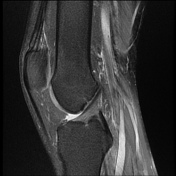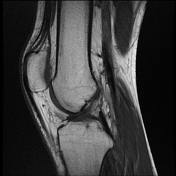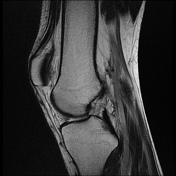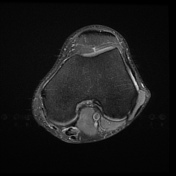Presentation
Tenderness in the lateral aspect of the knee, rule out lateral collateral ligament injury.
Patient Data











There is high signal intensity in the fluid sensitive sequences involving the fat planes between the iliotibial band and lateral femoral condyle associated with minimal fluid at this area, no significant thickening of the iliotibial band or abnormal signal intensity. The menisci, cruciate and collateral ligaments are unremarkable. The imaging appearance is consistent with iliotibial band friction syndrome.
Case Discussion
Iliotibial band friction syndrome is also called "runner's knee" and usually presents in runners and cyclists where friction between iliotibial band and the lateral femoral condyle results in pain in the lateral aspect of the knee. On MRI, high signal intensity on the fluid sensitive sequences will be evident between the iliotibial band the lateral femoral condyle. This findings is best appreciated on Coronal fat suppressed T2 or PD sequences deep to the ilitibial band.




 Unable to process the form. Check for errors and try again.
Unable to process the form. Check for errors and try again.